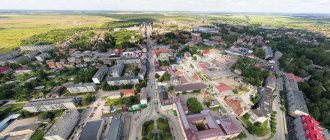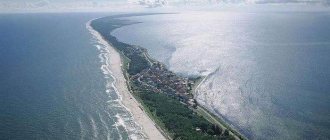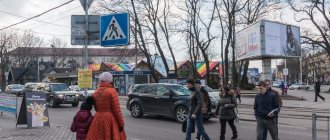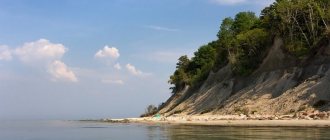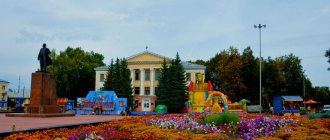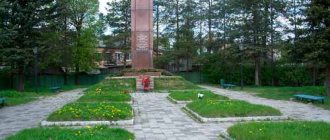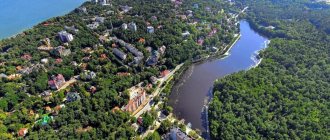LiveInternetLiveInternet
—Categories
- Trump (0)
- Trump (0)
- Traml (0)
- (0)
- Exhibitions, festivals (86)
- medal art, numesmatics (21)
- "Civilized" Europe (4)
- Single Photo (130)
- smart50 (40)
- Absurdity and absurdisms (8)
- Anglo-Saxons (39)
- Architecture, architect. monuments (359)
- Audio clips (604)
- Aphorisms. Wise thoughts. (158)
- Air fryer, multicooker, double boiler. Recipes (24)
- Baikal (8)
- Barack Obama (3)
- Boeing 777, details of the tragedy (11)
- Diseases (18)
- Videos (1138)
- Military (137)
- Geopolitics (21)
- Heroes of our time (15)
- Heroes of our time (2)
- Hypotheses (82)
- mushrooms (32)
- Dachnoe (368)
- Arts and crafts (90)
- home garden (1)
- ZhZL, biographies of interesting people (793)
- Funny toponymy (4)
- Winter preparations (79)
- Health. (490)
- from plant life (79)
- from the history of stones (79)
- Fine arts (711)
- Inventions and inventors. (105)
- Interesting facts (832)
- History (604)
- History in photographs (27)
- History of things (39)
- history of clothing, fashion (16)
- Calendar, holidays, memorable dates (144)
- Pictures, animation (7)
- Cinema and cartoons (73)
- Space (71)
- Cats (262)
- Cooking (596)
- Culinary stories, stories about food (65)
- Landscape design (24)
- Honey, honey treatment (2)
- Medicine (72)
- International relations (30)
- Memoirs, essays, literature (95)
- Mysticism, fantasy (16)
- Myths, legends, fairy tales (63)
- My comments to photos (11)
- My favorite recipes (38)
- My Messages (1984)
- My photos (1)
- Monasteries and churches abroad (30)
- Monasteries and churches of Russia (96)
- Museums of the world (8)
- Music (1139)
- musical instruments (42)
- Drinks (97)
- Nations of the world (30)
- Still lifes (64)
- Science (135)
- National cuisines (5)
- Not obvious probable? (13)
- unusual houses (80)
- Unusual names of dishes (8)
- extraordinary art (103)
- non-traditional beliefs, sectarianism (14)
- Minority Report (132)
- relationships, people and society. (149)
- arachnids (5)
- landscapes (122)
- Useful in LiRu (167)
- Useful tips (200)
- Useful links (26)
- Politics (199)
- Lenten table (20)
- Poetry (800)
- nature of Russia (95)
- Nature, natural phenomena (873)
- Proverbs (39)
- Walking around Moscow (78)
- Spices, seasonings (7)
- Travel (133)
- World Intelligence (5)
- Dividers (5)
- Religion (132)
- reptiles (6)
- Animal drawings (9)
- Gardens, parks, nature reserves, national parks (305)
- Today in the news (90)
- characters (8)
- Sports, sports history (37)
- Ancient manors (43)
- Poems from your favorite authors (52)
- Countries, cities and continents (851)
- Talented children (11)
- Dances of the peoples of the world (40)
- Creativity Uncle_Sasha (23)
- Tests, horoscopes (60)
- Technical structures: bridges, lighthouses, roads, etc. (58)
- Ukrainian kpizis (18)
- Fauna. Stories about animals. (1264)
- Philately (1)
- Philology (55)
- Flora, stories about plants (454)
- Photographic Art (1762)
- Fruits and berries (33)
- hobby (10)
- Flowers (217)
- Man is a threat to the planet (52)
- Natural wonders (13)
- Economics and finance (6)
- Humor, jokes, jokes (296)
-Music
—Search by diary
—Subscription by e-mail
— Regular readers
—Communities
—Broadcasts
-Statistics
Nesterovsky district is located in the southeast of the Kaliningrad region. It borders with Lithuania in the east and Poland in the south. In the north it borders with Krasnoznamensky, in the west with Gusevsky and Ozersky districts of the region. The district includes one urban and three rural settlements. The administrative center is the city of Nesterov .
The area of the district is 1062 sq. km. The population of the district in 2012 was 16,193 people.
Stallupenen (now the town of Nesterov in documents since 1539. On April 26, 1722, Frederick William I granted the village city rights.
According to data for 1782, 2,357 people lived in the city.
In 1860, the Koenigsberg-Eidkunen railway line (now Chernyshevskoe village) ran through the city.
In 1892, the railway connected Stallupenen with Tilsit (now the city of Sovetsk).
On September 7, 1946, the city of Stallupenen was renamed the city of Nesterov after the Hero of the Soviet Union, Colonel S.K. Nesterov, who died in the battles for the city.
The district was formed as part of the Koenigsberg region on April 7, 1946, renamed Nesterovsky on September 7, 1946 as part of the Kaliningrad region.
Nesterovsky district is one of the most picturesque areas of the region. The true pearl of the region, undoubtedly, is the largest and most beautiful lake in the region - Vishtynetskoe . The unusually large depth (54 m) and significant surface area (16.6 sq. km), as well as the elevation above sea level (+172 m) determine the originality and uniqueness of this basin not only for the Kaliningrad region, but also for the adjacent territories of Poland and Lithuania. This is a kind of “Baikal” of Central Europe, the recreational importance of which will undoubtedly increase.
In the area, and especially near Lake Vishtynets , a large number of objects are concentrated that have an attractive force for tourists and vacationers. These are natural objects, archaeological, historical, cultural. Unlike other rural areas, there are two museums here: the museum of the Trakkenen stud farm in Yasnaya Polyana and the museum of the classic of Lithuanian literature K. Donelaitis in Chistye Prudy, there are ancient arboretums "Yasnaya Polyana" and "Ilyinskoye" , relict lakes, buildings have been preserved in the settlements, whose age is more than 300.
The climate of the region is transitional from marine to temperate continental. The average temperature in January is -2.3 °C, in July + 16.6 °C.
On the territory of the district there is a relict lake Vishtynets - the largest in the region. In 1974, it, together with the Krasnaya (83 km long), was declared a natural monument. In fresh waters there are bream, pike perch, smelt, and eel; in the sea - herring, sprat, smelt, salmon.
The forest zone occupies 26.5% of the district's territory. In these forests there are brown hare, squirrel, marten, fox, roe deer, wild boar, etc. There are many birds. The Rominten Forest (Red Forest) is a natural monument
The Kaliningrad Railway station of the same name is located in Nesterovo This station belongs to the Kaliningrad - Chernyakhovsk - Chernyshevskoye railway line (Lithuanian border).
There are 62 historical and cultural monuments in the area. Among them are several war memorials.
The main attractions of the area include:
— Railway bridge -1900-1901. (Tokarevka village);
- Deer (Imperial) Bridge - Krasnolesye village (The bridge over the Krasnaya River was decorated with bronze figures of deer by the sculptor Richard Friese);
- Mass grave of Soviet soldiers - Krasnolesye village (Mass grave in which 481 Soviet soldiers are buried, who died in October-December 1944 in battles in East Prussia);
— Mass grave of Soviet soldiers (Prigorodnoye village);
— A memorial sign to the soldiers of the Hermann Goering parachute tank corps — in the early 2000s (Yasnaya Polyana village);
— Burial of Russian and German soldiers who died on August 20, 1914 during the Battle of Gumbinen-Goldap - in the second half of the 1910s (Dubovaya Roshcha village, 6 km from the village);
— Museum of the History of Horses - in a restored complex of buildings of the 18th-19th centuries (Yasnaya Polyana settlement, Shkolnaya St., 9);
— Dendrological park on the territory of the park there is a military burial place of the First World War, to which an oak alley leads from the highway - 1732 (in Ilyinsky);
- Chapel of the Holy Equal-to-the-Apostles Grand Duchess Olga - assigned chapel of the Orthodox parish of the Church of the Holy Spirit in Nesterov - 2007 (Lesistoe village, near the road, near the lake);
— a memorial complex associated with the life and work of the classic of Lithuanian literature K. Donelaitis (Chistye Prudy village);
- Catholic church - beginning XX century ( Nesterov )
Official website of the district: www.admnesterov.ru
Nesterov city
City of Nesterov
Despite the lack of an official title, Nesterov is still a city of military glory. It was taken by the Russian imperial army five times. Twice - during the Seven Years' War. In December 1812, the Russian army's foreign campaign began here.
The city was stormed twice in the First World War. Finally, in October 1944, the city was taken by the Red Army and became part of Russia forever. He received his name in honor of the hero. Hero of the Soviet Union Guard Colonel Nesterov Stepan Kuzmich died near the city during the Gumbinnen breakthrough.
City of Nesterov. Names of Lipetsk residents on the map of Russia
09:00, 05 May 2017
Special projects
On the map of the Russian Federation there is a small town of Nesterov with a population of just over four thousand people. It is the administrative center of the Nesterovsky district and the Nesterovsky urban settlement of the Kaliningrad region. It was named in honor of our fellow countryman, a native of the village of Talitsky Chamlyk, Dobrinsky district, Stepan Nesterov, who died in the battles for this city on October 20, 1944.
Until 1938 the city was called Stallupönen, from 1938–1946 it was called Ebenrode. Following the Second World War, it became part of the USSR. In 1946, Ebenrode was renamed Nesterov.
During World War II, the Oflag-52 (1D) prisoner-of-war camp was located near Ebenrode, where, according to various estimates, between five and eight thousand Soviet soldiers died.
In the autumn of 1944, Ebenrode was taken by Soviet troops. In the 90s, after the border with Lithuania was formalized, a border and customs control point for railway transport was established in the city.
Located 140 kilometers east of the regional center, near the border with the Republic of Lithuania.
Nesterov is a railway station on the Kaliningrad-Vilnius-Moscow line. The nearest cities are Gusev (25 km by road) and Krasnoznamensk (37 km). The highway connecting Kaliningrad with Moscow passes through the city. On the territory of the district there is the largest 24-hour international automobile crossing “Chernyshevskoe” (Russia-Lithuania). Nesterovsky district also has a border with Poland. The economy of the municipality is dominated by the agricultural sector.
Nesterov Stepan Kuzmich - deputy commander of the 2nd Guards Red Banner Tatsin Tank Corps for the combat unit of the 3rd Belorussian Front, guard colonel.
During the Soviet-Finnish War of 1939-1940, Stepan Kuzmich was the chief of staff of a tank battalion. In 1941 he graduated in absentia from the Military Academy of Armored Forces.
From October 1941, Nesterov was at the front and at the beginning of the Battle of Stalingrad he commanded a tank brigade.
After the defeat of the Germans on the Volga, Nesterov's tank brigade received the title of Guards. On the Kursk Bulge in the famous battle of Prokhorovka, Lieutenant Colonel Nesterov personally led the tankers into the attack, being in the thick of the battle. In August 1943, the brigade was transferred to the Western Front. Tanks of brigade commander Nesterov liberate Smolensk and Yelnya. For excellent execution of the command’s order to defeat the enemy in Yelnya, the brigade receives the honorary name “Yelninskaya”.
In April 1944, Nesterov's brigade was the first to break into the southeastern outskirts of Minsk in the early morning of July 3, 1944. For the liberation of the capital of Belarus, the 26th Guards Tank Brigade was awarded the Order of the Red Banner. Subsequently, the Nesterovites contributed to the encirclement of a large enemy group and participated in its liquidation.
After the liberation of Belarus, soldiers of the 26th Guards Brigade crush the enemy in Lithuania. Nesterov's tankers especially distinguished themselves during the liberation of Vilnius and crossing the Neman, for which the brigade was awarded the Order of Suvorov, 2nd degree.
When the tankers came close to the border with East Prussia, Guard Colonel Nesterov parted with his brigade, with which he walked along front-line roads from the Don to Lithuania. He, as one of the experienced and talented commanders, is appointed to the post of deputy commander of the 2nd Guards Tatsin Tank Corps. In October 1944, Stepan Kuzmich led the crossing of the Pissa River in the area of the settlement of Kassuben, located 14 kilometers south of the city of Stallupenen (now the city of Nesterov, Kaliningrad region) and ensured further successful actions of the corps. At the head of one of the tank brigades, he personally pursued the enemy.
Developing the offensive, the tankers, supported by a motorized rifle brigade, reached the city of Stallupenen. At the height of the battle on October 20, 1944, Guard Colonel Stepan Kuzmich Nesterov was killed by a German bullet west of the town of Kassuben (now the village of Ilinskoye, Nesterovsky district, Kaliningrad region). However, the operation, launched under the skillful leadership of our fellow countryman, was completed with honor: the city of Stallupenen was taken and the fascist division “Hermann Goering” was defeated. The bridgehead for the Red Army's general offensive against East Prussia was conquered.
Guard Colonel Stepan Nesterov was initially buried with military honors in a park in the city of Kaunas (Lithuania). Later he was reburied in a mass grave in the city of Nesterov, Kaliningrad region.
By decree of the Presidium of the Supreme Soviet of the USSR of April 19, 1945, for the courage and heroism shown in the fight against the Nazi invaders, Guard Colonel Stepan Kuzmich Nesterov was posthumously awarded the title of Hero of the Soviet Union.
In 1946, the city of Ebenrode was renamed Nesterov.
In 1956, a monument to the Hero of the Soviet Union Nesterov was erected in the center of the city of Nesterov. In 2005, the old monument was replaced with a new one made of bronze.
A bust of Nesterov was installed in the village of Dobrinka, Lipetsk region. A secondary school in the village of Talitsky Chamlyk, Dobrin district, is named after Nesterov. There is a memorial plaque on her building.
Also, memorial plaques were installed at one of the stations of the Kaliningrad Railway and in Lipetsk on Hero Street. Nesterova Street in Lipetsk was formed on May 21, 1957. It connected Gagarin and Telman streets of the regional center in the area of Lipetsk secondary school No. 24.
In addition to the city of Nesterov, in the Kaliningrad region the cities of Guryevsk and Gusev are named after natives of the Lipetsk land.
Matvey SUSHKOV
Photos from the websites of “Heroes of Russia” and the administration of the Nesterovsky district, from the Great Encyclopedic Dictionary of the Kaliningrad Region and the LipetskMedia archive.
Subscribe to our channel in Yandex.Zen
Facebook Twitter
The main attractions of the Kaliningrad region: photos, history, addresses
The Masurian Canal is an unfinished waterway in East Prussia. It was supposed to connect the Great Masurian Lakes with the Baltic Sea through the Lava and Pregolya rivers, as well as the Kaliningrad Bay.
Currently, the canal, located on the territory of two states - Russia and Poland, does not operate as a waterway. Today you can see the remains of the locks here, which make an indelible impression on lovers of such exotic things.
The idea of creating a shipping route from the Great Masurian Lakes to the Baltic Sea arose in the second half of the 17th century. The need was related to providing a convenient and cheap route for transporting agricultural products, and later industrial goods.
But the implementation of this idea began only a century later. The allocated funds became insufficient, and the project was abandoned in 1775. This idea was returned to again in the mid-19th century. In 1862, a new waterway project was developed.
In 1892, the Prussian parliament considered a new canal project, called the Masurian Canal. The gateways were named after nearby villages. During construction, excavators and concrete pumps were used for the first time, and welding instead of riveting was used in the production and installation of steel structures.
In the mid-1960s, for some reason, the water left the Soviet part of the canal. As a result, in 1975, the Masurian Canal and the Lava River were excluded from the Register of Inland Waterways of the USSR and were actually abandoned. After the collapse of the Soviet Union in the 1990s, some of the hydraulic equipment of the locks was dismantled.
At the same time, the Polish part of the Masurian Canal remains under the supervision of the Regional Water Management Office in Białystok to this day, which carries out the protection and maintenance of the canal's hydraulic structures.
Since the last century, the Masurian Canal in the Kaliningrad region has attracted a lot of tourists. And now this seemingly abandoned building is quite a popular tourist attraction. It is worth noting that currently the tourism and recreation infrastructure is actively developing here.
In April 2021, in the village of Druzhba (formerly Allenburg), on the lock of the same name No. 1, built in the 1930s, the Masurian Canal house museum opened. It features the caretaker's office, which houses a photo exhibition on the history of the Masurian Canal.
Visitors are greeted by the caretaker himself, Uncle Mazur. In the museum you can also buy various souvenirs and original postcards with views of Königsberg, Wehlau and other ancient cities of East Prussia.
- Address: Kaliningrad region, Pravdinsky district, village. Friendship
